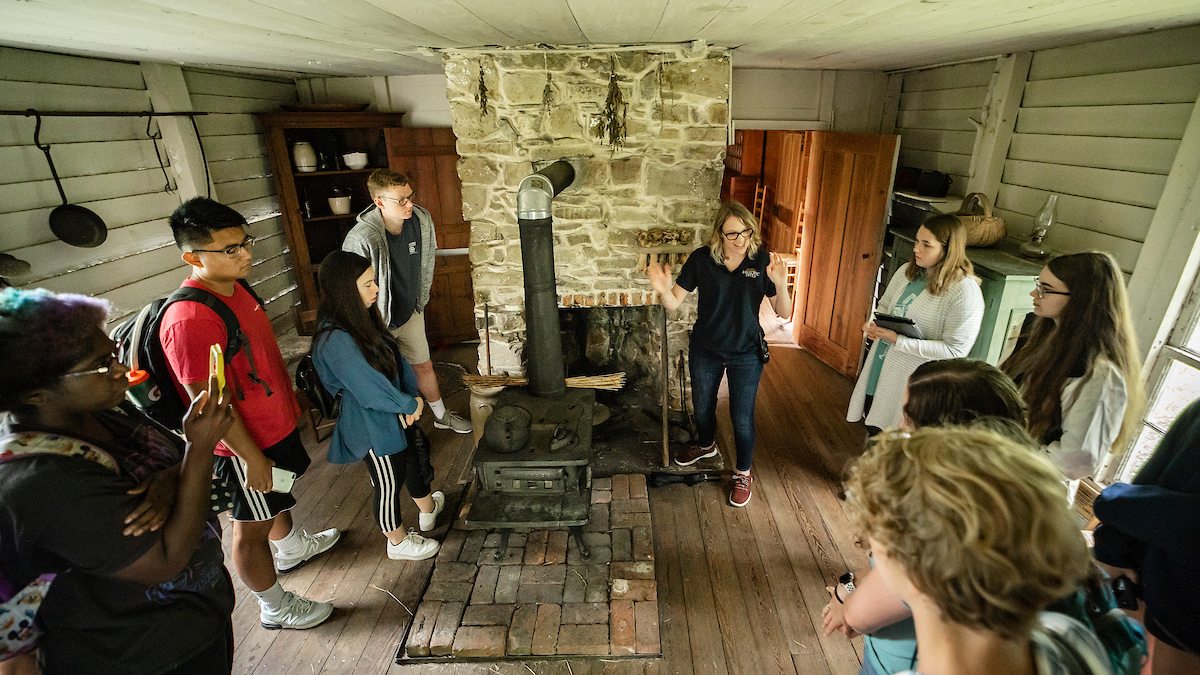What’s hidden inside the world’s most famous museums?
What’s hidden inside the world’s most famous museums?
A Maymester course on museum studies reveals the hidden artifacts and unseen decisions behind these institutions.
Tuesday, May 28th, 2019

This Maymester, students in Lyneise Williams’ Introduction to Museum Studies course visited the Louvre, the British Museum and special exhibits around the world without ever leaving Chapel Hill.
Using the Liquid Galaxy in Davis Library, they studied the Mona Lisa, the Rosetta Stone and other artistic masterpieces on an immersive, seven-panel display. But they also saw the museums’ little-known masterpieces, housed in the museums’ back corners and basements.
“We’re looking at how those spaces are arranged and who gets the prime real estate,” Williams said. “In the front of the museums there tends to be classical Greek or European art, so we look at where things are situated and the narrative that gets told in the floorplans.”
The course is part of Maymester, an intensive semester of fast-paced courses offered by UNC Summer School in May. Introduction to Museum Studies combines readings and field trips to expose students to the behind-the-scenes work of museums, including exhibit design and conservation.
With only three weeks to lead students through a deep dive in museum studies, Williams has one central message to share: whether it’s the Louvre or a small, local art gallery, museums are not designed without biases.
“When I go into a museum, I see a group of choices and selections made by a variety of people and presented to me,” said Williams, an associate professor of art history who has worked in museums and galleries as a curator and educator for decades. “I want students to know that they are only seeing the finished product.”
To understand the process behind curating and presenting an exhibition, students visited local museums, such as Carolina’s own Ackland Art Museum and the Museum of Life and Science in Durham, to watch how designers, curators, administrators and staff members bring exhibitions to life.
Museum work isn’t exactly as glamorous as it appears in Ocean’s Eleven or Night at the Museum, Williams said, and watching the installation process helps students see the decisions that lead to the final presentation.
“They need to see what’s happening behind the scenes so they can understand how much of this is produced and constructed for visitors,” she said.
Senior philosophy student Tori Darden isn’t planning on a career in museum studies — she’s thinking more along the lines of becoming a congresswoman or Supreme Court justice — but she said the course has given her a greater appreciation and understanding of the museums she grew up visiting.
“[The class] is really busting down the frameworks I had around museums,” Darden said. “Yes, it’s breathtaking, and it’s a privilege to behold, but it’s also a display of wealth. It’s also a display of power, a display of self-interest.”
When Maymester is over, Darden wants to learn more about art history by visiting institutions that elevate cultural art and artifacts that always don’t get the same attention as “the greats.” Someday, she said, she will share her new appreciation of ethnic art with her children and teach them about the pieces housed in the dark corners of the world’s most famous museums.
That’s exactly the kind of awareness Williams hopes students will take away.
“I want my students to see that there’s a different kind of agency they can have in a museum that makes it more inclusive, that makes it more accessible, that doesn’t privilege certain cultures over others,” Williams said. “Students who want to work in museums, or even just visit museums, should leave the class being more conscious of their actions in that space. I hope they never see museums the same way again.”
